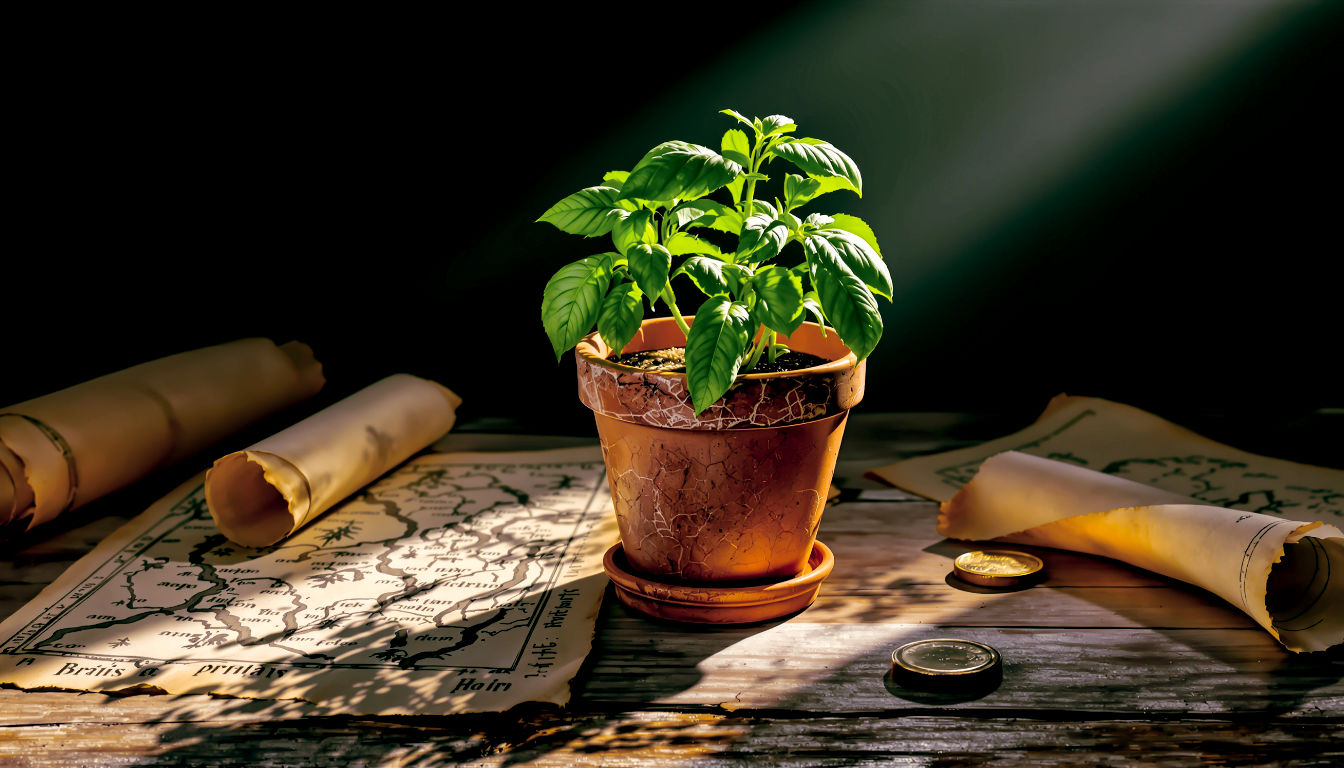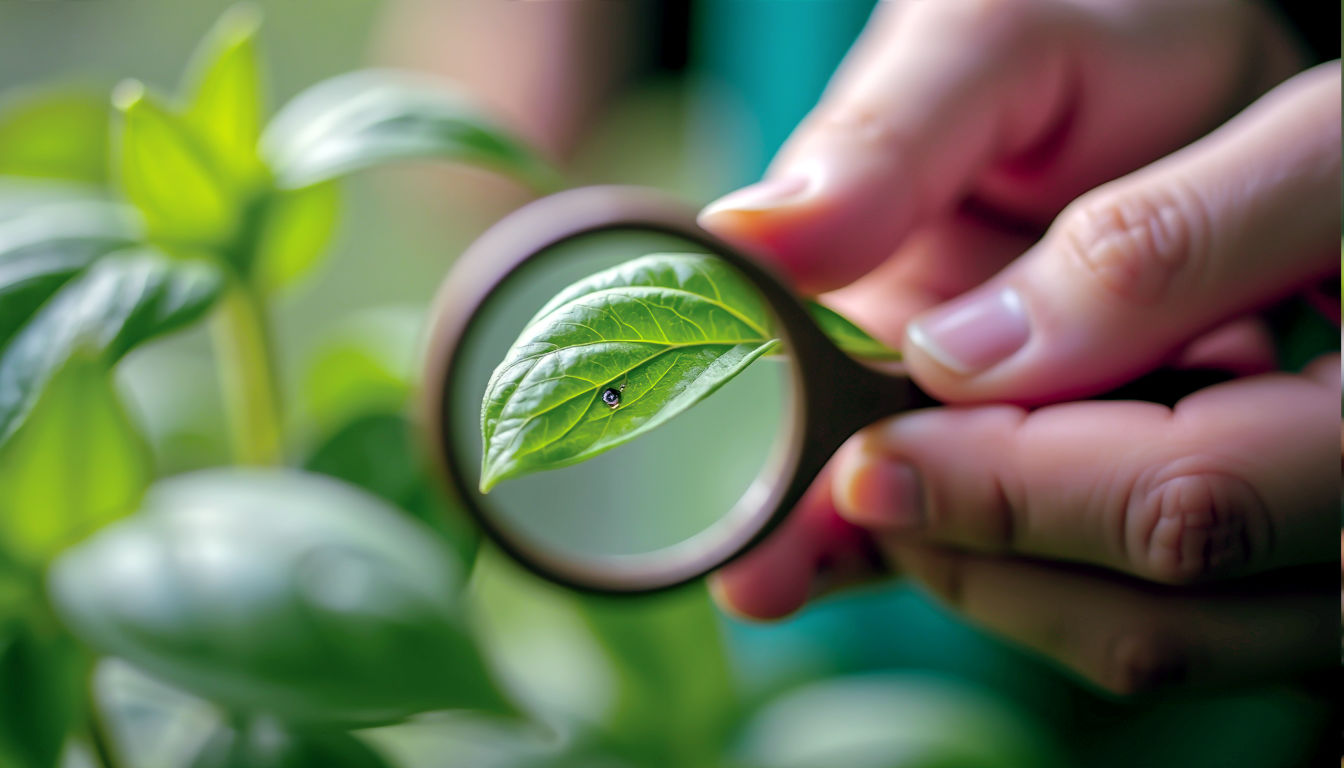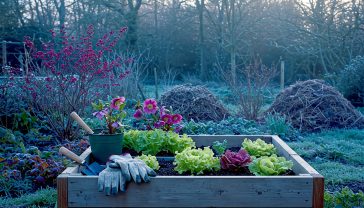Basil: The Aromatic Companion of Every Herb Garden?
A comprehensive guide to growing and using basil in the UK. Discover its history, varieties, and practical tips for a thriving herb garden.

This post may contain affiliate links. If you make a purchase through these links, we may earn a commission at no additional cost to you.
There’s a quiet little hero on windowsills and in garden patches across the country, one that promises a taste of the Mediterranean even on the gloomiest of British days. It’s basil. But is it really the companion of every herb garden? A true green-fingered Brit knows that this warm-weather lover can be a bit of a diva. It demands sunshine, loathes a sudden chill, and seems to wilt with a frown if you look at it funny. It’s a plant that tests your patience and your nurturing instincts, but the reward — that unmistakable, sweet, peppery aroma and the vibrant flavour of a homegrown leaf — makes it all completely worth it.
For all its fussiness, basil has a rich history that stretches far beyond the Italian trattoria. It’s a plant steeped in myth, folklore, and global tradition, a true ‘royal herb’ with a story as fascinating as its flavour. This article will be your comprehensive guide to everything basil, from its ancient origins and diverse family tree to practical, no-nonsense tips for keeping it thriving on your kitchen windowsill or in a sheltered spot in your back garden. We’ll delve into its many varieties, explore its surprising culinary and medicinal uses, and help you get the absolute most out of this fragrant friend.
The Storied History of a Royal Herb
Before it became the star of the modern pesto, basil had a long and winding journey through history, one filled with drama, superstition, and reverence. Its very name, Ocimum basilicum, hints at its regal status, derived from the Greek word “basilikon,” meaning “royal thing” or “king.” This regal connection wasn’t just about its flavour, but about its profound significance in ancient cultures.
The journey of basil begins not in Italy, as many might assume, but in India and Southeast Asia, where it has been cultivated for over 5,000 years. In ancient India, basil, particularly the variety known as Holy Basil or Tulsi, was considered sacred. It was revered as a symbol of the goddess Tulsi and was used in religious rituals, medicinal practices, and placed in the mouths of the dying to guide them to a better place. It was a plant of purity, protection, and long life.

From India, it made its way to ancient Egypt, where it was used as an embalming agent, its powerful aroma helping to preserve the deceased. This use gave it an association with mourning, a stark contrast to its later life. The Greeks, however, had a more… tempestuous relationship with the herb. They believed that basil would only grow if its seeds were sown with cursing and swearing. The more you raged and ranted, the better the plant would supposedly grow. This odd belief persisted, and for a time, basil was seen as a symbol of hatred. The Roman Empire, ever the pragmatists, initially adopted this belief but later, in a complete reversal, came to see basil as a symbol of love and fertility. A pot of basil became a token of affection between lovers.
By the Middle Ages, basil’s reputation took another peculiar turn in Europe. Folklore emerged claiming that the herb could spontaneously generate scorpions, or that simply smelling it could cause scorpions to grow in your brain. A truly terrifying thought for any budding medieval chef! This superstition was so prevalent that some herbalists advised against growing it at all. It was even said that witches would drink basil juice before flying on their brooms, further cementing its dubious reputation in some circles.
When basil finally arrived in Tudor England in the 1500s, it was met with similar suspicion. It was noted that it would not grow next to the herb rue, which was believed to ward off poisons. Anything that couldn’t thrive near a poison antidote was naturally held in contempt. Despite this, it was still used in folk magic to protect against spells and pests, and Tudor farmers’ wives would sometimes present small pots of basil to visitors as a sign of good fortune. So, even in Britain’s early relationship with the herb, there was always a sense of both magic and a touch of the perilous.
Fast forward to the modern era, and the plant has shed most of its bizarre folklore, now celebrated purely for its flavour. Its journey from a sacred plant in India to a symbol of love in Rome, and a suspect in Britain, is a testament to its enduring power and the varied ways humanity has interacted with it.
A Family of Flavour: Getting to Know Basil’s Relatives
When most of us in the UK think of basil, we’re probably picturing the classic, large-leafed variety you get in the supermarket. But that’s just the tip of the iceberg. The basil family is a diverse and fascinating group, each with its own unique flavour profile and culinary purpose. Here’s a rundown of the family members you might encounter, and what makes them special.
Sweet Basil (or Genovese Basil)
This is the one we all know and love. With its large, smooth, and slightly cupped green leaves, sweet basil has a wonderfully balanced flavour—sweet, peppery, and with a gentle hint of anise or clove. It’s the undisputed king for a reason.
- Simplified Explanation: This is your everyday basil, the one you use for pretty much everything. If a recipe just says ‘basil,’ this is the one it’s talking about.
- Detailed Explanation: The quintessential basil for Italian and Mediterranean cooking, particularly for making the classic pesto (pesto alla genovese) where its sweetness can shine. It’s also fantastic in a simple Caprese salad with mozzarella and tomatoes, or torn over a homemade pizza just after it comes out of the oven. Its leaves are large, making them perfect for bruising to release their volatile oils.
Holy Basil (or Tulsi)
Unlike its sweet cousin, Holy Basil is revered more for its medicinal and religious properties than its culinary ones, especially in its native India. It has a slightly hairy, purplish stem and a much more pungent, peppery, and clove-like flavour.
- Simplified Explanation: This is the ‘yoga’ basil. It’s not one you’d chuck on your pasta, but rather one you’d find in health teas or ancient remedies.
- Detailed Explanation: In Indian Ayurveda, Holy Basil is a staple, used to help the body adapt to stress. Its primary compounds, eugenol and rosmarinic acid, are thought to have antioxidant properties. Culinarily, it’s a bit too strong for delicate dishes and is best used in spicy, rich curries or herbal teas.
Thai Basil
This one is easy to spot in a good Asian food market. It has slender, spiky leaves, a deep purple stem, and often purple flowers. Its flavour is an exhilarating mix of sweet, spicy, and distinctly liquorice or anise.
- Simplified Explanation: It’s the spicier, more exotic cousin of sweet basil. You’d use it in a stir-fry, not a spaghetti bolognese.
- Detailed Explanation: Thai Basil is a cornerstone of Southeast Asian cuisine. It’s often added at the last minute to curries, stir-fries, and noodle soups (like the famous Vietnamese pho) to preserve its distinct flavour. Unlike sweet basil, it’s more tolerant of heat, so you don’t have to be as precious about adding it at the very end of a dish.
Lemon Basil
As the name suggests, this variety has a beautiful, citrusy aroma and taste. It’s a cross between basil and a plant from the same family with a distinct lemony flavour.
- Simplified Explanation: If you like lemonade on a hot summer’s day, you’ll love this. It’s basil with a zesty kick.
- Detailed Explanation: Lemon Basil’s bright, fresh flavour makes it a fantastic addition to fish dishes, chicken marinades, and vinaigrettes. It also works brilliantly in desserts, adding a fragrant, lemony twist to things like fruit salads, sorbets, or even a basil-infused gin and tonic.
Cinnamon Basil
This variety is another one that lives up to its name. It has a spicy, cinnamon-like flavour and is often used in Mexican and Asian cooking.
- Simplified Explanation: It’s a bit weird, but in a good way. It’s a basil that tastes like Christmas spices.
- Detailed Explanation: With its reddish-purple stems and a flavour that hints at both basil and cinnamon, it’s a great choice for infusing teas or adding a unique dimension to fruit salads and baked goods. It also works surprisingly well in savoury dishes with a hint of warmth, like a Moroccan tagine or a rich Mexican mole.
Exploring these different basils can open up a whole new world of cooking, and you might find that while you started with one, you end up with a few new favourites.
Nurturing Your Own Royal Herb: A British Gardener’s Guide to Growing Basil
Growing basil in the UK can feel like a game of cat and mouse with the weather. One minute it’s a glorious, sun-drenched day, the next it’s raining sideways and the temperature has plummeted. Basil, a plant that absolutely adores consistent warmth, can be a challenge. But with the right know-how, you can keep a steady supply of fresh, aromatic leaves on hand all summer long.

Starting Your Basil Adventure
You have two main options: starting from seed or buying a supermarket plant.
- Growing from Seed: This is a bit more of a faff, but ultimately gives you a stronger, more resilient plant. In the UK, you should sow your seeds indoors from late March to early May. Don’t just chuck a single seed in a pot; basil seeds are tiny and cheap, so sow a small cluster of five or six in a 10cm pot. Lightly sprinkle compost or vermiculite over the top, give it a gentle mist of water, and place it in a warm, bright spot. A sunny windowsill is perfect. Basil seeds need warmth to germinate (ideally around 18∘C or 64∘F), so if your house is on the chilly side, you might need a heated propagator.
- Rescuing a Supermarket Plant: This is the common choice for many, but a word of caution: supermarket basil is often a short-lived affair. It’s grown in a high-density, force-fed environment for instant use. The roots are usually a tangled mess, and multiple plants are crammed into a tiny pot. Your first task is to gently divide the plants. Loosen the root ball and, as carefully as you can, separate the individual seedlings. Plant each one into its own larger pot (at least 20cm or 8 inches wide) with fresh, multi-purpose compost. This gives each plant the space it needs to thrive rather than competing for light and nutrients.
The Ideal Home for Basil
Basil loves a warm, sunny, sheltered spot. In the UK, this almost always means indoors.
- Indoors: A south-facing kitchen windowsill is basil’s happy place. It will get plenty of light and benefit from the consistent warmth of your home. A greenhouse or a bright conservatory is even better. Just be mindful of scorching midday sun in the height of summer, as it can burn the leaves.
- Outdoors: You can try growing basil outside, but it’s a gamble. Don’t even think about it until all danger of frost is gone, which in the UK is usually late May or early June. Even then, choose the most sheltered, sun-trap spot you can find, such as a patio corner against a warm wall. If a cold night is forecast, be prepared to bring your pot inside. Many seasoned British gardeners treat basil as a summer annual for a reason.
The Basil Care Routine
Once you’ve got your basil in its new home, it’s all about a consistent routine.
- Watering: Basil loves moist soil but hates soggy roots. The key is to water it regularly but in moderation. Water from the bottom if you can, by standing the pot in a tray of water for 20 minutes to let it soak up what it needs. If watering from the top, try to avoid getting the leaves wet, as this can encourage fungal diseases. Always water in the morning, so the roots don’t sit in cold, wet compost overnight. A pot with good drainage is non-negotiable.
- Feeding: Basil is a hungry plant, especially if you’re picking from it often. Once your plant is established (after a few weeks), a fortnightly feed of a balanced liquid fertiliser will help it produce lush, leafy growth. Avoid potassium-rich feeds like tomato food, which encourage flowering rather than leaves.
- The Big Pinch: This is the most important secret to a bushy, productive basil plant. When your plant has grown a few sets of leaves (at least two to three pairs), find the very top of the main stem and pinch it out just above a set of two leaves. This removes the main growing tip, forcing the plant to produce two new shoots from the nodes below. It’s a bit like a haircut. This simple trick transforms a tall, leggy plant into a full, bushy one, giving you far more leaves to harvest.
The Basil Bumper Crop: From Plant to Plate and Beyond
You’ve cared for your basil, you’ve fed it, you’ve pinched it out, and now you have a glorious, leafy plant. It’s time to start using it. The best way to harvest is to continually pinch out the growing tips, as we discussed above. This not only gives you leaves but also encourages more growth. Never strip a plant bare; take what you need from the top to keep it producing.
Classic Culinary Uses
Basil is most famously associated with Italian food, and for good reason. It’s a perfect partner for tomatoes, mozzarella, and garlic.
- Pesto: This is the ultimate use for a bumper crop of basil. The classic pesto recipe is wonderfully simple. It’s a paste made from basil leaves, pine nuts, garlic, Parmigiano-Reggiano cheese, and a good quality extra-virgin olive oil. You whizz it all up in a food processor, season it, and you’re done. It’s a versatile sauce for pasta, a spread on bruschetta, or a dollop on a simple roasted vegetable. The flavour of homemade pesto is a world away from the stuff you buy in a jar.
- Caprese Salad: A ridiculously simple but sublime dish. Arrange slices of fresh mozzarella and ripe tomatoes on a plate, tear over some fresh basil leaves, and drizzle with a good quality balsamic glaze and olive oil. The freshness of the basil is what makes this dish sing.
- Tomato Sauce: Add a handful of fresh basil leaves to a tomato sauce at the very end of cooking. The heat will wilt them and release their flavour without cooking away all the aroma. This is a simple trick that elevates a basic sauce to something special.
Beyond the Italian Stallion
While it’s a star of Italian cuisine, basil is surprisingly versatile.
- In Cocktails: For a truly refreshing summer drink, muddle a few basil leaves in the bottom of a glass with a little lime juice, then add gin or vodka, and top with sparkling water. It’s a botanical, invigorating twist on a classic.
- With Fruit: Basil has a surprising affinity for certain fruits. Try tearing some over a bowl of sliced strawberries and a scoop of vanilla ice cream. The unexpected, slightly peppery sweetness of the basil cuts through the sweetness of the fruit, creating a wonderful contrast.
Preserving Your Harvest
If you have more basil than you can possibly use, don’t despair. You can easily preserve the flavour of summer for those grey, chilly British winter days.
- Freezing: This is arguably the best way to preserve basil’s flavour.
- Freeze Whole: Simply pick the leaves, wash and dry them thoroughly, and spread them in a single layer on a baking tray. Freeze for a couple of hours, then transfer the frozen leaves to an airtight container or a freezer bag. They might turn a bit dark, but the flavour will be there. You can add them directly to soups and sauces.
- Freeze in Oil: This is a fantastic option. Whiz your basil leaves in a food processor with a little bit of olive oil (about one tablespoon of oil for every cup of leaves). Spoon the resulting purée into an ice cube tray and freeze. Once frozen, pop the cubes out and store them in a freezer bag. A basil oil cube is a brilliant way to add a burst of summer flavour to a winter stew or a pasta sauce.
- Drying: While you can dry basil, it’s not the most effective method, as much of the flavour is lost in the process. If you do want to try, hang small bunches of basil upside down in a warm, dry, well-ventilated space until the leaves are brittle. Once dry, crumble them up and store them in an airtight jar.
Keeping Your Basil Happy and Healthy: Troubleshooting for the Home Gardener
Even the most attentive gardener can run into problems with basil. It’s a sensitive soul, and a little bit of knowledge goes a long way in keeping it perky.

Common Problems
- Yellowing Leaves: This is almost always a sign of an unhappy basil plant. The most likely culprit is either overwatering or underwatering. Check the soil. If it’s waterlogged and soggy, you’re overdoing it. If it’s bone-dry, give it a good drink. Yellow leaves can also be a sign of a nutrient deficiency, so a fortnightly feed can help.
- Leggy Plants: A tall, spindly basil plant with not many leaves is a sign it’s desperate for more light. It’s ‘stretching’ towards the sun. Move it to a brighter spot, and remember to pinch it out to encourage it to bush out.
- The Dreaded Bolting: Bolting is when a basil plant decides its life is over and it wants to produce flowers and seeds. It will send up a tall, woody stalk with little buds. As soon as a plant starts to bolt, the leaves will lose much of their flavour and become bitter. Bolting is triggered by heat, stress, or the plant simply reaching the end of its life cycle.
Common Pests
- Aphids: These tiny green or black insects love to suck the sap from new shoots. You can deal with them with a gentle spray of soapy water (a few drops of washing-up liquid in a spray bottle of water) or by simply hosing the plant down with a jet of water.
- Slugs and Snails: These molluscs adore basil, especially young seedlings. If you’re growing outdoors, be on high alert. You can use slug pellets (choose the wildlife-friendly iron phosphate ones) or simple, non-chemical methods like copper tape around the pots or crushed eggshells as a deterrent.
The Companion Plant Solution
Basil is a bit of a bodyguard. If you’re growing tomatoes in a greenhouse, try planting a pot of basil next to them. Basil’s strong aroma is thought to repel pests and even improve the flavour of the tomatoes. A win-win for any British gardener hoping to grow their own veg.
Basil’s Enduring Legacy: The British Connection
So, is basil the aromatic companion of every herb garden? For the British gardener, the answer is a qualified ‘yes’. While it may not be as hardy or low-maintenance as mint or rosemary, its presence feels essential. It connects our gardens to a global history and brings a much-needed burst of sunshine to our kitchens.
Basil is more than just a culinary ingredient; it’s a living link to ancient traditions and a testament to the power of a single plant to unite cultures across time and space. From the sacred rituals of India to the love tokens of ancient Rome, and from the folklore of medieval England to the urban balconies of modern-day London, basil has held a special place in our hearts and on our plates. It challenges us to be better gardeners, to be patient and nurturing, and in return, it rewards us with a flavour and aroma that is simply unmatched.
The next time you’re contemplating your herb garden, don’t shy away from this little diva. Give it a sunny spot, a bit of warmth, and a lot of love. Pinch it out, water it right, and when you finally harvest that first perfect leaf, you’ll understand why this plant has been a king for millennia.
Further Reading:
- The Royal Horticultural Society (RHS) – RHS is a world-renowned gardening charity. Their website has a comprehensive guide on growing basil in the UK.
- Gardener’s World – The BBC’s Gardener’s World is a highly trusted source for all things gardening, and their guide on basil is no exception.
- The British Herbal Medicine Association – An authoritative source on the uses of herbs in traditional medicine.
- The National Herb Centre – Located in London, this garden is a great place to explore different herbs and their uses.






